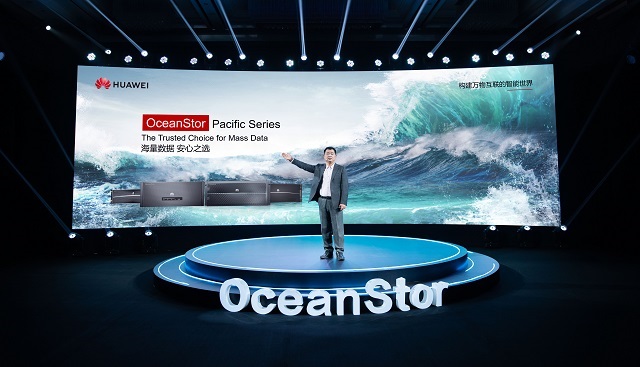Huawei has launched OceanStor Pacific Series storage system targeting customers in sectors, such as carriers, finance, government, energy, healthcare, manufacturing, and transportation.

Huawei is one of the leading suppliers for telecom operators. Huawei is the number one telecom equipment maker — ahead of Ericsson and Nokia.
Huawei said its OceanStor storage, which delivers efficient and cost-effective services for AI, HPC, videos, and other mass data scenarios, has been deployed in more than 150 countries for more than 12,000 customers.
“Mass data will play an important role in digital transformation. Only 2 percent of global data is stored, and only 10 percent of the data is being mined for value. Telecoms are facing insufficient capacity, data silos, and complex management when dealing with mass data,” Peter Zhou, president of Huawei Data Storage and Intelligent Vision Product Line, said.
Huawei, which released its first generation of file storage in 2009, has invested in mass data storage ever since, ranking No. 1 in market share in China for four consecutive years. Huawei is the fifth largest storage supplier in 2019.
Global spending on enterprise external OEM storage systems fell 0.1 percent to $7.9 billion in the fourth quarter of 2019, according to IDC.
Dell Technologies was the largest external enterprise storage systems supplier, accounting for 27.6 percent of revenue. HPE (with 10.1 percent), IBM (9.1 percent), NetApp (8.9 percent) and Huawei (7.8 percent) are the top five storage suppliers. Hitachi and Pure Storage are out of the top five.
IDC’s latest forecast indicates that spending on IT infrastructure including server and enterprise storage systems will decline in 2020 due to coronavirus pandemic. Server market revenues will decline 3.4 percent to $88.6 billion. External enterprise storage systems (ESS) revenues will decline 5.5 percent to $28.7 billion in 2020.
Huawei said its new storage system streamlines data processing across different phases. Data does not need to be migrated between multiple storage systems, improving service processing efficiency by 25 percent and reducing space by 20 percent.
This series breaks the architectural boundary with the innovative vNode mode along with the next-generation elastic EC technology. It yields a disk utilization of up to 93 percent, over 40 percent higher than the industry average.
Its node with high density and large capacity supports 120 disks in a 5 U space with 2.67x density than general-purpose storage servers and 62.5 percent space reduction. Hot, warm, and cold data is automatically tiered onto SSDs, HDDs, and Blu-ray disks on demand, meaning that data can flow freely without intervention.





